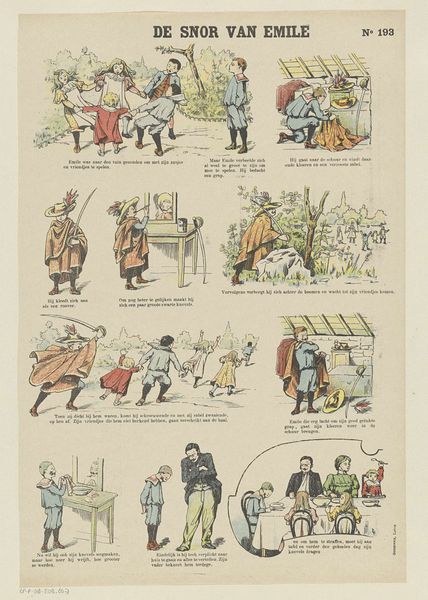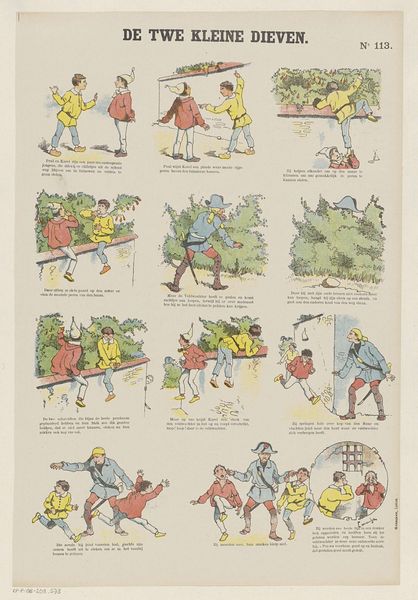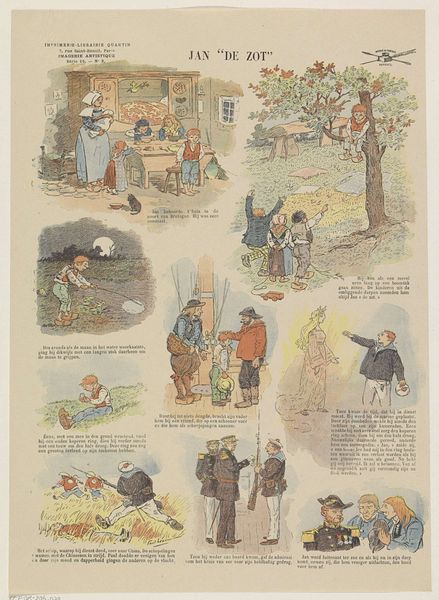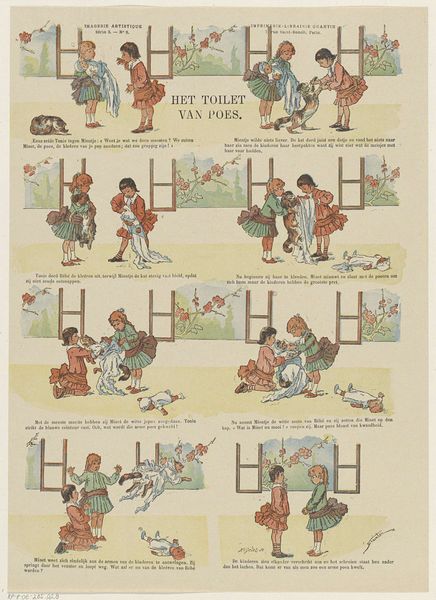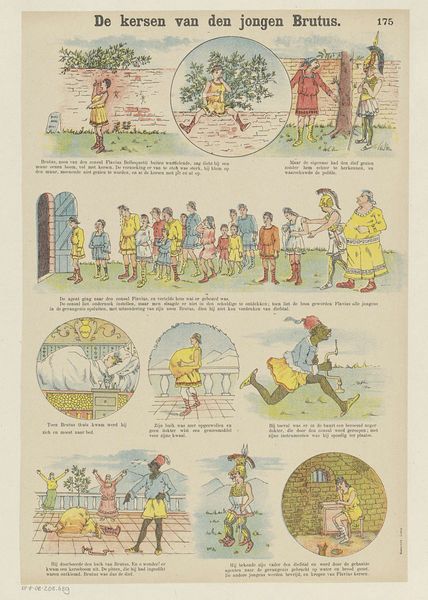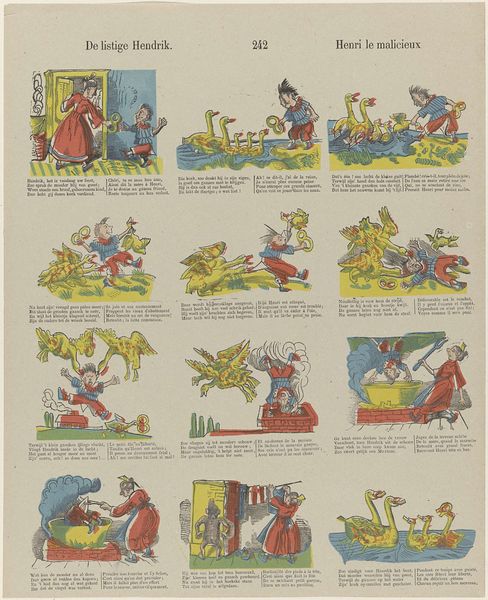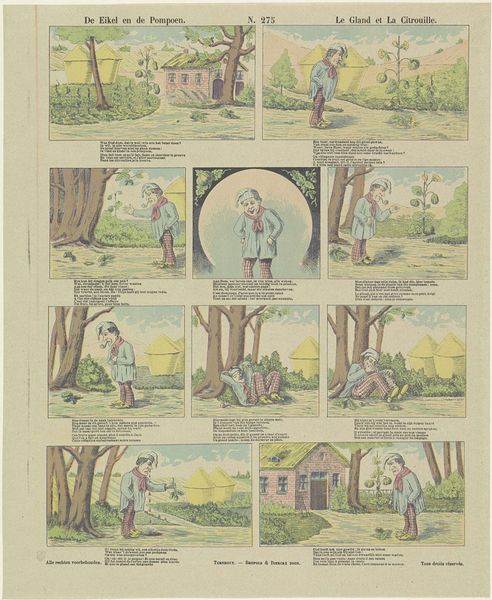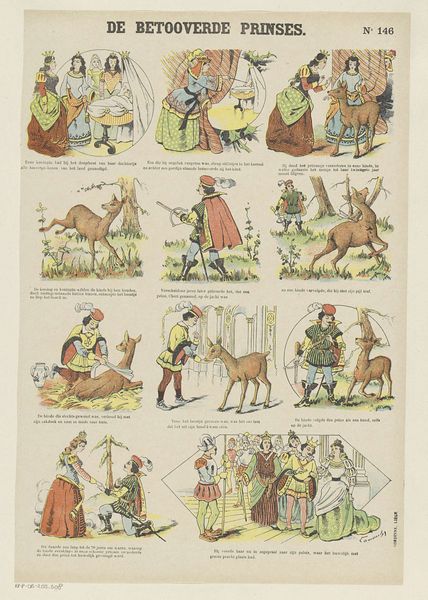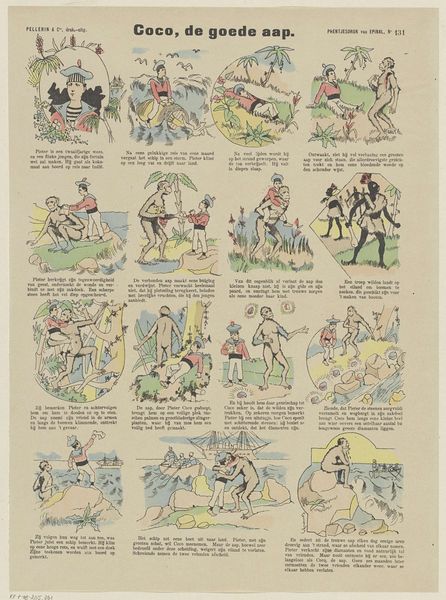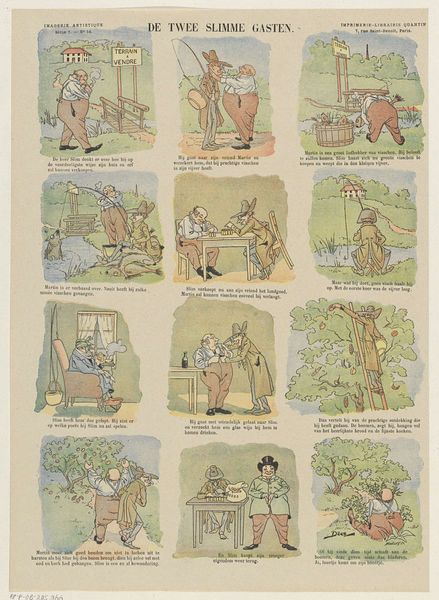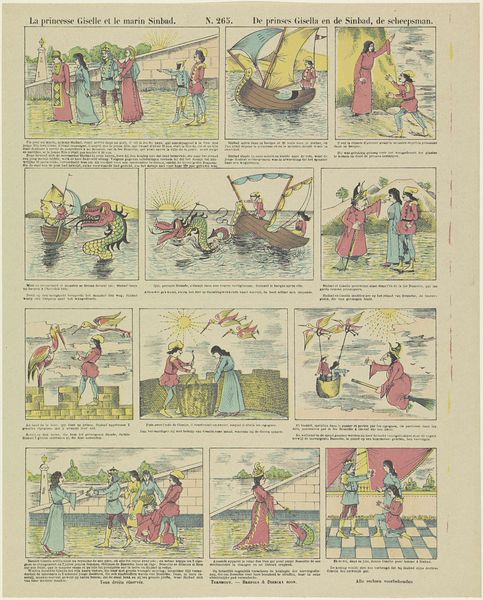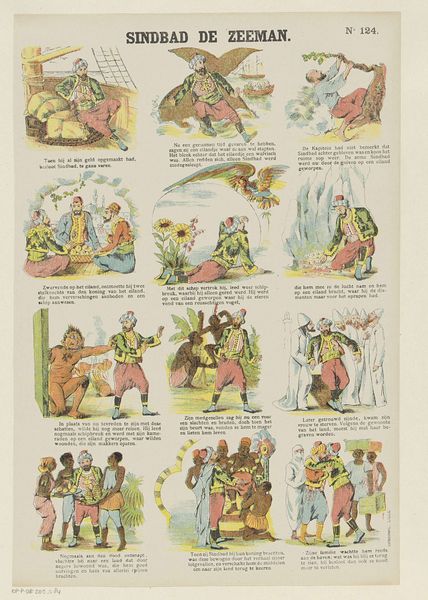
#
fairy-painting
#
narrative-art
# print
#
impressionism
#
genre-painting
#
academic-art
Dimensions: height 368 mm, width 264 mm
Copyright: Rijks Museum: Open Domain
Curator: Isn't this charming? Firmin Bouisset's "Petits-mauvais coeurs," dating between 1876 and 1892. What's your initial take? Editor: My first thought is one of bittersweet nostalgia. There’s an innocent quality, a sort of pastoral childhood idyll, but with a hint of something unsettling lurking beneath the surface, a fragile beauty threatened somehow. Curator: Fragile, yes, like a dream just on the verge of slipping away. Looking at it through the lens of symbols, childhood is often idealized as a period of innocence and purity. The "mauvais coeurs" – bad hearts – hint at a corruption, perhaps the loss of innocence as they grow? It's also structured like a cartoon strip; each frame showing them up to mischief, but they look like the most perfect kids ever. Editor: Indeed, Bouisset captures something essential about the theatre of childhood, using visual cues like picnic baskets, blankets turned into tents... these are all shorthand for make-believe and the forging of those early relationships. The soft impressionistic technique adds to this; creating a diffused light as if we're recalling from a half-remembered dream. The image feels like looking into collective memory through the lens of art, capturing a certain longing for a world without hard edges. It reminds me a bit of Blake's "Songs of Innocence and Experience." Curator: That is such a perfect connection, and like William Blake, this has a narrative quality – each mini scene depicting the little dramas. Perhaps "bad hearts" isn’t malicious intent but merely children grappling with desires or transgressions? The power dynamics implied by their postures, their belongings; even that mischievous game in the lower left, almost mimicking an exotic beast of burden. What else could that beast signify? Editor: Well, it's clearly symbolic. It's that playful act which represents a kind of submission, the darker side of social relations even amongst innocent children. And you mentioned transgression, there are a set of unspoken rules when people group together – a shared delusion under the safety of a picnic blanket... like something feral and very fragile at once. It creates such an uneasy calm. Curator: "Uneasy calm", I love how that contradiction encapsulates the work as a whole. We begin with rosy cheeks and sunshine, then meander towards hidden power plays under blankets, small cruelties; a perfect miniature human comedy playing out in somebody's yard! Editor: Exactly. "Petits-mauvais coeurs." It stays with you; makes you reflect upon a complex interplay of youth, freedom, social mores and maybe most interestingly: memory itself.
Comments
No comments
Be the first to comment and join the conversation on the ultimate creative platform.
